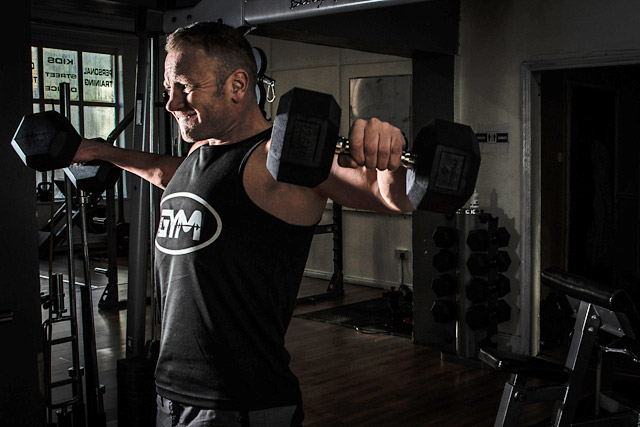Sooner or later, every visitor to the fitness center will reach a stage where their progress will slow down or even stop completely. What can break the stagnation? Is it a different training plan? Exercise more often and more intensely? Eat more calories? Take supplements? Or maybe sleep more hours? Everything plays a role to some extent. Each change makes up an imaginary 1% leading to better results, and there can be 100 such changes. own movement “.
These are super slow repetitions. It’s not a special, professional or patented name, it’s just a very slow and controlled lifting and lowering phase, but the word “super” just gives it the right spark. Slow practice of the intended movement is part of the practice of every sport. The boxer first tries the punches slowly, perceiving timing and accuracy. The weightlifter spends a lot of time with the empty bar and even more time with the broomstick before honing the technique, which he then uses to explode the loaded dumbbells. Even before each stroke, the golfer slowly tests its course. And so we could go on indefinitely, because in every sport there is an initial (and necessary for future development) slow practice of technology or also proper coordination. Keep in mind that as a beginner in the gym, you did a slow practice of each exercise, which you do to this day on a weekly basis. Isn’t it? So let’s look at what benefits these super-slow repetitions can have and how to use them.

Advantage 1 – improvement of technique
I understand that it’s still boring to keep reading and listening to that damn exercise technique, but it’s still the most important factor in making sure you train and stimulate your muscle. Thanks to the super-slow repetitions, you will achieve a much better connection of the muscle with the mind, ie mind-muscle connection , and thus ensure that everything is set up and working as it should. In case an expert questions the importance of the technique for the growth of muscle mass, we have a proven positive effect of internal and external cues in exercise and connecting the mind with the muscle on muscle activity and performance (for example, the publication from 2016 B. Schoenfeld Attentional Focus for Maximizing Muscle Development , link below article).
The first example is the training of deltoid muscles during lateral lifting of one-handed dumbbells. If you prefer heavier dumbbells instead of precision technique and help the whole body during the lift to work in front of the gym audience, in the best case you will strengthen (in the worst you just overload) rather upper trapezoids and you can immediately forget about shoulder growth. However, if you choose an adequate load, sit on a bench with a straight (or slightly tilted) backrest and start lifting the dumbbells slowly and with the idea of lifting them to the sides of the body, you will give the shoulder exercises the right dimension.
As a second example, we will mention the dynamic valgosity or knee bend inwards (knees to “X”) during the lifting phase of the squat, which you could learn more about in the article Leg day: 10 most common mistakes and their correction (I.). This problem is mainly due to weak lateral stabilizers of the hip joints, ie the middle and small buttock muscles. You can perform dozens of compensatory and corrective exercises after hundreds of repetitions for targeted activation and strengthening of these muscles and try to improve the dynamic stabilization of the knee joint, but this effect will have a squat transfer only when you include technique training (or super slow repetitions) with a loaded barbell. on back. Only by performing the lowering and lifting phase very slowly will you learn to engage the mentioned muscles around the hip in a coordinated way and thus control the movement of the knees.

2nd advantage – injury prevention
The inclusion of super slow repeats is also beneficial for injury prevention and overtraining. During the slowed-down stroke phase, you have no chance of cheating , so there is no uncontrollable muscle contraction and thus no sudden and excessive loading of the tendons. It can also adjust the expected internal muscular incoordination, associated with painful myofasciálními trigger points ( myofascial trigger points) to relieve some type of muscle pain. In addition, there is a “balance” of tension in the trained muscle, which makes its work (or function) more efficient and economical. Last but not least, as a bonus, you will lighten the load on the central nervous system, which is useful, especially if you need to take a break from strength training and function normally the next day. In other words, the muscles will work better, while you do not have to worry about injury or overtraining.
3rd advantage – muscle hypertrophy
Finally, we come to the most attractive topic, the increase in muscle mass. Thanks to the previous two advantages, you will benefit from super-slow repetitions not only during the current training program, but also especially when returning to the classic training scheme, ie for example during explosive lifting phases and slow starting phases. Thanks to the fact that the muscles will be able to work in a more coordinated manner in the entire range of movement, we will achieve better involvement or loading of all muscle fibers. In the case of a classically performed explosive lifting phase, it is necessary to exert the greatest effort at the very beginning of the stroke, whereas in super-slow repetitions, the effort is distributed evenly during the entire movement. Basically, you have a unique opportunity to strengthen the weakest links in the chain.

Application in practice
The answer is to answer the questions of what super-slow repetitions are and how to include them in the training program. The basically is that you perform the positive and negative phases of each repetition very slowly, 5 seconds at least and say, for example, up to 20 seconds at most. Thus, recording the tempo according to Poliquin would look like 5151, for example. The slow tempo can be applied to the vast majority of exercises known from the gym (of course, except for ballistic exercises such as kettlebell swing and the like). You can slow down biceps strokes, bench presses, push-ups, squats, or even (and you’ll enjoy it a lot) deadlifts.
Depending on the goal, you set the time under tension (TUT) for the given exercise and then simply count the number of repetitions according to the tempo. If you want to squat, perform 2 repetitions at a tempo of 5151 with an adequate load, for example (TUT a little over 20 seconds in total). If you prefer hypertrophy, 4 to 6 repetitions at the same rate (5151) will give something around 40-60 seconds TUT, so there is enough metabolic stress needed for the growth stimulus. The tempo and number of repetitions can of course be varied very variably according to the goal and training. It is not a problem to perform, for example, 1 repetition at tempo 7171 for strength and 3 repetitions at tempo 9191 for hypertrophy, there are no limits to imagination.
There are also plenty of ways to include super slow repetitions in a training plan. You can complete the entire 4- to 6-week training cycle based only on slow exercise, but you also don’t have to. You can reap the benefits even if you include one slow workout per week or one slow workout during a workout, and even if you include one single set in each exercise. Slow repetitions suit everyone differently, but thanks to the described advantages, they can have a certain benefit for all exercisers.
